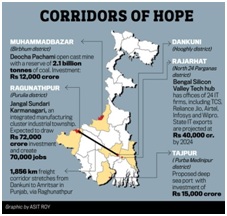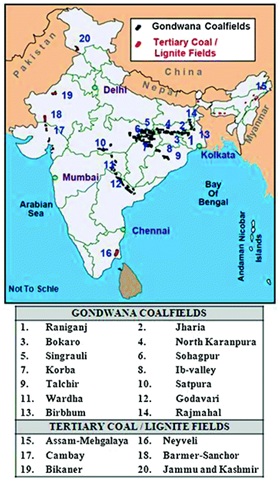

1st March 2022 (6 Topics)
Context
The Government of West Bengal has started disbursing compensation to residents of villages under the Deocha-Pachami and Dewanganj-Harinsingha coal blocks.
About
About Deucha-Pachami Mines:
- Deucha-Pachami-Dewanganj-Harinsinga coal block is the second-largest coal block in the world; it is the largest in India.
- The block has a thick coal seam trapped between equally thick layers of rocks, mostly basalt. It has a great economic value.
- The existence of these thick basalt layers, however, makes mining of coal difficult; foreign investment and technology will be hence needed for mining.

Issues:
- The Deocha-Pachami-Harinsingha-Dewanganj mining block will not only displace 21,000 people but also destroy local ecology, which the tribal community relies on.
- A majority of the local population belong to the Santhal community — a Schedule Tribe.
- This region, however, does not fall under Schedule V.
- The Panchayat (Extension of the Scheduled Areas) Act (PESA), 1996, which empowers the Gram Sabha to put forth the people’s opinion and consult them for such projects, is also not applicable here.
|
A Schedule V area is declared, according to the Union Ministry of Tribal Affairs, based on the following criteria:
|
|
About Coal:
Types of coal found in India:
|


